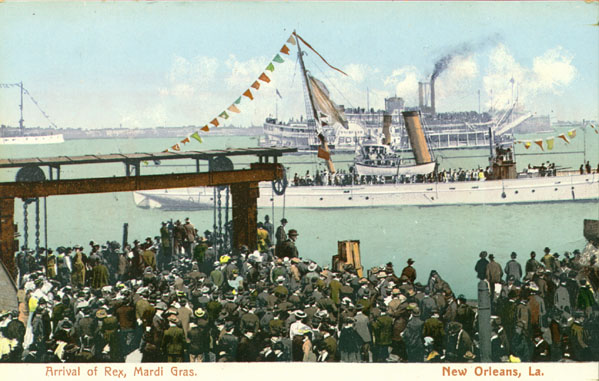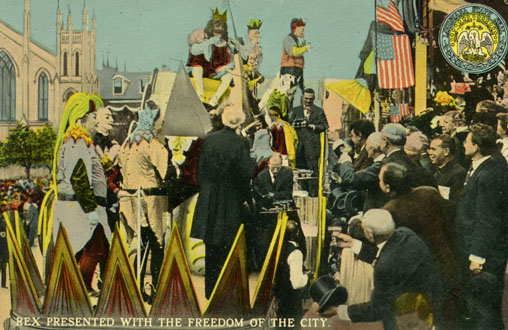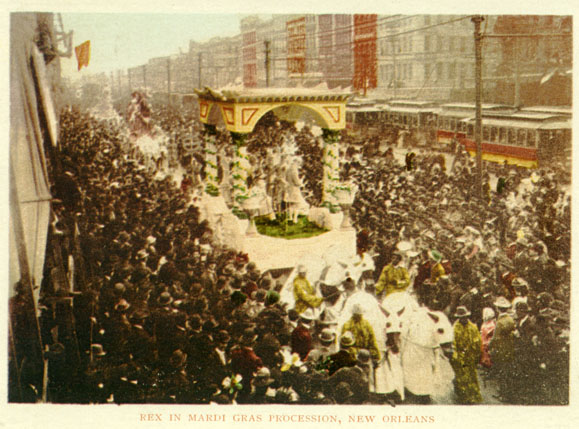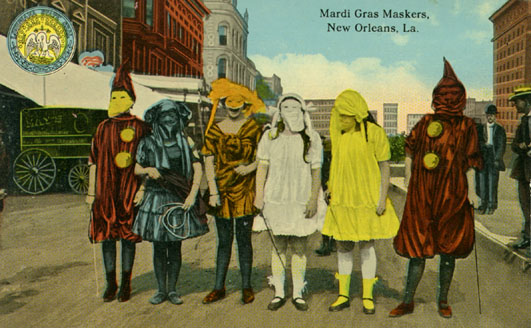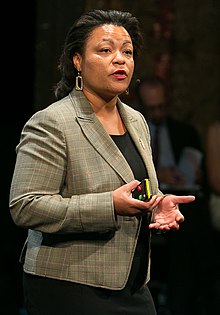Mardi Gras New Orleans
Mardi Gras is so much more special when you understand what you’re celebrating and what each tradition means to the generations of parade-goers who have stood on parade routes before you. There is a story and a purpose behind everything you’ll experience during Carnival Time – from the king cake you’ll eat to the flambeaux who light the parades at night.
The origins of Mardi Gras can be traced to medieval Europe, passing through Rome and Venice in the 17th and 18th centuries to the French House of the Bourbons. From here, the traditional revelry of "Boeuf Gras," or fatted calf, followed France to her colonies.
History
The first record of Mardi Gras being celebrated in Louisiana was at the mouth of the Mississippi River in what is now lower Plaquemines Parish, Louisiana, on March 2, 1699. Iberville, Bienville, and their men celebrated it as part of an observance of Catholic practice. The date of the first celebration of the festivities in New Orleans is unknown. A 1730 account by Marc-Antoine Caillot celebrating with music and dance, masking and costuming (including cross-dressing). Excerpt | A Company Man - The Book An account from 1743 that the custom of Carnival balls was already established. Processions and wearing of masks in the streets on Mardi Gras took place. They were sometimes prohibited by law, and were quickly renewed whenever such restrictions were lifted or enforcement waned. In 1833 Bernard Xavier de Marigny de Mandeville, a rich plantation owner of French descent, raised money to fund an official Mardi Gras celebration. James R. Creecy in his book Scenes in the South, and Other Miscellaneous Pieces describes New Orleans Mardi Gras in 1835:[2] Shrove Tuesday is a day to be remembered by strangers in New Orleans, for that is the day for fun, frolic, and comic masquerading. All of the mischief of the city is alive and wide awake in active operation. Men and boys, women and girls, bond and free, white and black, yellow and brown, exert themselves to invent and appear in grotesque, quizzical, diabolic, horrible, strange masks, and disguises. Human bodies are seen with heads of beasts and birds, beasts and birds with human heads; demi-beasts, demi-fishes, snakes' heads and bodies with arms of apes; man-bats from the moon; mermaids; satyrs, beggars, monks, and robbers parade and march on foot, on horseback, in wagons, carts, coaches, cars, &c., in rich confusion, up and down the streets, wildly shouting, singing, laughing, drumming, fiddling, fifeing, and all throwing flour broadcast as they wend their reckless way. In 1856 21 businessmen gathered at a club room in the French Quarter to organize a secret society to observe Mardi Gras with a formal parade. They founded New Orleans' first and oldest krewe, the Mystick Krewe of Comus. According to one historian, "Comus was aggressively English in its celebration of what New Orleans had always considered a French festival. It is hard to think of a clearer assertion than this parade that the lead in the holiday had passed from French-speakers to Anglo-Americans. ... To a certain extent, Americans 'Americanized' New Orleans and its Creoles. To a certain extent, New Orleans 'creolized' the Americans. Thus the wonder of Anglo-Americans boasting of how their business prowess helped them construct a more elaborate version than was traditional. The lead in organized Carnival passed from Creole to American just as political and economic power did over the course of the nineteenth century. The spectacle of Creole-American Carnival, with Americans using Carnival forms to compete with Creoles in the ballrooms and on the streets, represents the creation of a New Orleans culture neither entirely Creole nor entirely American."[3] In 1875 Louisiana declared Mardi Gras a legal state holiday.[4] War, economic, political, and weather conditions sometimes led to cancellation of some or all major parades, especially during the American Civil War, World War I and World War II, but the city has always celebrated Carnival.[4] In 1979 the New Orleans police department went on strike. The official parades were canceled or moved to surrounding communities, such as Jefferson Parish, Louisiana. Significantly fewer tourists than usual came to the city. Masking, costuming, and celebrations continued anyway, with National Guard troops maintaining order. Guardsmen prevented crimes against persons or property but made no attempt to enforce laws regulating morality or drug use; for these reasons, some in the French Quarter bohemian community recall 1979 as the city's best Mardi Gras ever. In 1991 the New Orleans City Council passed an ordinance that required social organizations, including Mardi Gras Krewes, to certify publicly that they did not discriminate on the basis of race, religion, gender or sexual orientation, to obtain parade permits and other public licenses.[5] Shortly after the law was passed, the city demanded that these krewes provide them with membership lists, contrary to the long-standing traditions of secrecy and the distinctly private nature of these groups. In protest—and because the city claimed the parade gave it jurisdiction to demand otherwise-private membership lists—the 19th-century krewes Comus and Momus stopped parading.[6] Proteus did parade in the 1992 Carnival season but also suspended its parade for a time, returning to the parade schedule in 2000. Several organizations brought suit against the city, challenging the law as unconstitutional. Two federal courts later declared that the ordinance was an unconstitutional infringement on First Amendment rights of free association, and an unwarranted intrusion on the privacy of the groups subject to the ordinance.[7] The US Supreme Court refused to hear the city's appeal from this decision. Today, New Orleans krewes operate under a business structure; membership is open to anyone who pays dues, and any member can have a place on a parade float. Newspapers began to announce Mardi Gras events in advance, and they even printed "Carnival Edition" lithographs of parades' fantastic float designs (after they rolled, of course - themes and floats were always carefully guarded before the procession). At first, these reproductions were small, and details could not be clearly seen. But beginning in 1886 with Proteus' parade "Visions of Other Worlds," these chromolithographs could be produced in full, saturated color, doing justice to the float and costume designs of Carlotta Bonnecase, Charles Briton and B.A. Wikstrom. Each of these designers' work was brought to life by talented Parisian paper-mache' artist Georges Soulie', who for 40 years was responsible for creating all of Carnival's floats and processional outfits. 1872 was the year that a group of businessmen invented a King of Carnival, Rex, to preside over the first daytime parade. To honor the visiting Russian Grand Duke Alexis Romanoff, the businessmen introduced Romanoff's family colors of purple, green and gold as Carnival's official colors. Purple stands for justice; gold for power; and green for faith. This was also the Mardi Gras season that Carnival's improbable anthem, "If Ever I Cease to Love," was cemented, due in part to the Duke's fondness for the tune. The following year, floats began to be constructed entirely in New Orleans instead of France, culminating with Comus' magnificent "The Missing Links to Darwin's Origin of Species," in which exotic paper-mache' animal costumes served as the basis for Comus to mock both Darwin's theory and local officials, including Governor Henry Warmoth. In 1875, Governor Warmoth signed the "Mardi Gras Act," making Fat Tuesday a legal holiday in Louisiana, which it still is. Like Comus and the Twelfth Night Revelers, most Mardi Gras krewes today developed from private social clubs with restrictive membership policies. Since all of these parade organizations are completely funded by their members, New Orleanians call it the "Greatest Free Show on Earth!" In 1704, Mobile established a secret society (Masque de la Mobile), similar to those that form our current Mardi Gras krewes. It lasted until 1709. In 1710, the "Boeuf Gras Society" was formed and paraded from 1711 through 1861. The procession was held with a huge bull's head pushed along on wheels by 16 men. Later, Rex would parade with an actual bull, draped in white and signaling the coming Lenten meat fast. This occurred on Fat Tuesday. New Orleans was established in 1718 by Bienville. By the 1730s, Mardi Gras was celebrated openly in New Orleans, but not with the parades we know today. In the early 1740s, Louisiana's governor, the Marquis de Vaudreuil, established elegant society balls, which became the model for the New Orleans Mardi Gras balls of today. The earliest reference to Mardi Gras "Carnival" appears in a 1781 report to the Spanish colonial governing body. That year, the Perseverance Benevolent & Mutual Aid Association was the first of hundreds of clubs and carnival organizations formed in New Orleans. By the late 1830s, New Orleans held street processions of maskers with carriages and horseback riders to celebrate Mardi Gras. Dazzling gaslight torches, or "flambeaux," lit the way for the krewe's members and lent each event an exciting air of romance and festivity. In 1856, six young Mobile natives formed the Mistick Krewe of Comus, invoking John Milton's hero Comus to represent their organization. Comus brought magic and mystery to New Orleans with dazzling floats (known as tableaux cars) and masked balls. Krewe members remained anonymous. In 1870, Mardi Gras' second Krewe, the Twelfth Night Revelers, was formed. This is also the first recorded account of Mardi Gras "throws."
History In Pictures
